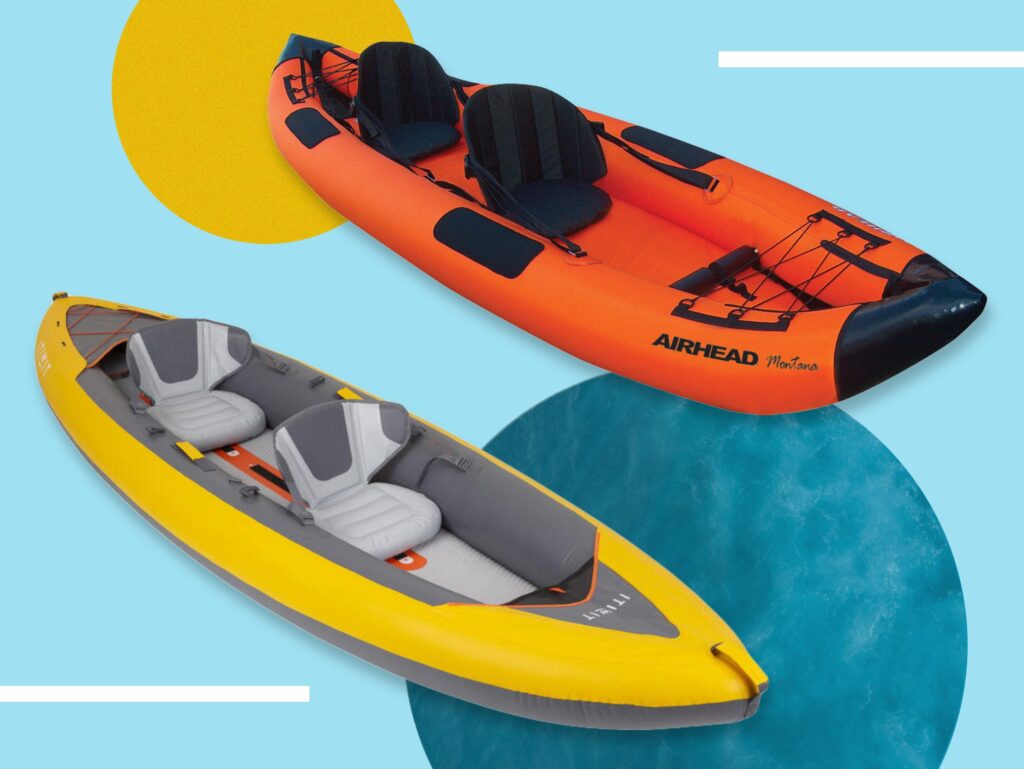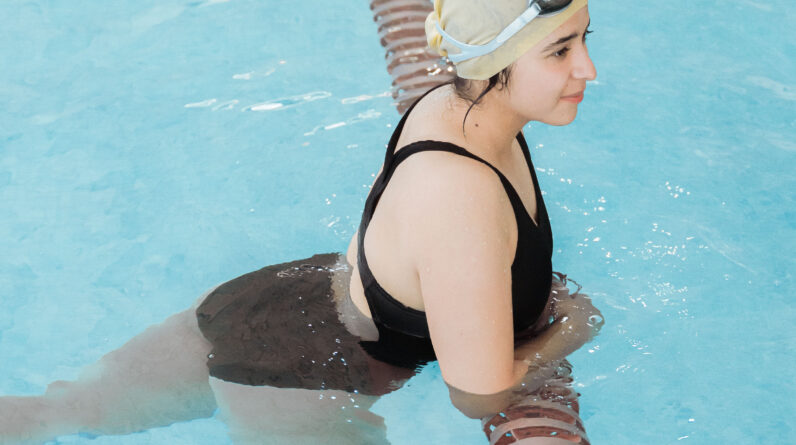
Have you ever wanted to explore the tranquil waters but thought lugging around a heavy kayak would be too much of a hassle? Well, I’m here to tell you that lightweight inflatable kayaks are the perfect solution! These portable and easy-to-use kayaks are a game-changer for outdoor enthusiasts who want to embark on their water adventures without any added stress. In this article, we will dive into the world of lightweight inflatable kayaks and discover why they are becoming a popular choice among adventurers like yourself.
When it comes to lightweight inflatable kayaks, convenience is the name of the game. These kayaks are designed to be incredibly lightweight, making them easy to transport and carry. Whether you’re headed to a remote lake or planning a weekend getaway at a beach, you won’t have to worry about the logistics of hauling a traditional, bulky kayak. With an inflatable kayak, you can simply deflate it, roll it up, and stow it away in a compact bag. Not only does this make it a breeze to transport, but it also saves you valuable storage space at home.
But don’t be fooled by their lightweight design – these kayaks are built to be sturdy and durable. Many modern inflatable kayaks are made from tough materials that can withstand rugged conditions. They are engineered to provide stability and maneuverability on the water, allowing you to paddle with ease. So, whether you’re a beginner looking to dip your toes into kayaking or an experienced paddler seeking a more portable option, these lightweight inflatable kayaks are sure to pique your interest. Continue reading to learn more about the features and benefits of these fantastic watercrafts.

Introduction to Lightweight Inflatable Kayaks
If you’re an adventure enthusiast with a love for water sports, lightweight inflatable kayaks are an excellent choice for your next aquatic adventure. Whether you enjoy leisurely paddling on calm lakes, exploring challenging rapids, or angling in serene fishing spots, these portable and versatile kayaks offer a wide range of possibilities. In this article, we will delve into the world of lightweight inflatable kayaks, exploring their definition, benefits, history, assembly and maintenance, various applications, advantages and limitations, safety precautions, and comparisons with traditional kayaks. Additionally, we will highlight notable brands and models, as well as popular destinations for kayaking. So, gear up and get ready to dive into the waters with lightweight inflatable kayaks!
Definition of Lightweight Inflatable Kayaks
Lightweight inflatable kayaks are watercraft designed for recreational use on rivers, lakes, and even the ocean. Unlike traditional hard-shell kayaks, these kayaks are made from highly durable and puncture-resistant materials such as PVC or Hypalon, which are reinforced with multiple air chambers. The inflatable nature of these kayaks allows for easy transportation and storage, as they can be deflated and packed into a compact carry bag. When inflated, these kayaks provide excellent stability and maneuverability, making them suitable for both beginners and experienced kayakers.
Benefits of Lightweight Inflatable Kayaks
-
Portability: One of the significant advantages of lightweight inflatable kayaks is their portability. These kayaks can be easily transported to your desired location, whether it’s a remote lake or a distant river. They can be deflated, folded, and conveniently stored in your car trunk or checked in as luggage during travel.
-
Compact Storage: Unlike traditional kayaks that require ample storage space, inflatable kayaks can be stored in a small closet or under the bed. This feature is especially beneficial for those living in apartments or with limited storage space.
-
Easy Assembly: Inflatable kayaks can be quickly inflated using a manual or electric pump. The assembly process typically takes no more than 10-15 minutes, allowing you to hit the water swiftly and efficiently.
-
Versatility: Lightweight inflatable kayaks are suitable for various water activities such as recreational paddling, fishing, and even white water rafting. Their versatility makes them an excellent investment for individuals who enjoy engaging in different water sports.
-
Affordability: Inflatable kayaks are generally more affordable than traditional hard-shell kayaks. This makes them an attractive option for beginners or budget-conscious individuals who want to explore the waters without breaking the bank.
History and Evolution of Lightweight Inflatable Kayaks
The roots of inflatable kayaks can be traced back to the mid-20th century when the United States Coast Guard used inflatable boats for rescue missions.
In the 1950s, the advent of PVC-coated fabrics led to the development of the first commercial inflatable kayaks. These early models were rudimentary compared to their modern counterparts, with limited stability and durability. However, advancements in materials and design over the years have transformed lightweight inflatable kayaks into highly functional watercraft.
Today, leading manufacturers employ cutting-edge technology to create inflatable kayaks that rival the performance and durability of traditional kayaks. Improved materials, such as high-density PVC and Hypalon, ensure resistance to punctures and abrasions, enhancing the longevity of these kayaks.

Choosing the Right Lightweight Inflatable Kayak
Before purchasing a lightweight inflatable kayak, it’s essential to consider several factors to ensure you select the right one for your needs. Here are some key considerations:
Factors to Consider Before Purchasing
-
Intended Use: Determine the primary purpose of your kayak, whether it’s for recreational paddling, fishing, or adventure-seeking. Different kayaks are designed with specific features to meet various requirements.
-
Weight Capacity: Check the weight capacity of the kayak to ensure it can accommodate you and any additional gear without compromising stability or maneuverability.
-
Inflation Time: Consider the time it takes to inflate and deflate the kayak. If you prefer quick assembly, opt for models that inflate within a shorter duration.
-
Storage Space: Evaluate the storage space available at your home or transport vehicle. Ensure the deflated kayak can fit comfortably in the designated storage area.
Different Types of Lightweight Inflatable Kayaks
There are several types of lightweight inflatable kayaks available on the market, each designed for specific purposes:
-
Recreational Kayaks: These kayaks are ideal for casual paddlers and beginners. They offer stability, ease of maneuverability, and ample storage space for recreational gear.
-
Fishing Kayaks: Designed explicitly with anglers in mind, fishing kayaks have specialized features such as rod holders, storage compartments, and more stability for casting and reeling in fish.
-
Touring Kayaks: If you’re planning longer expeditions or multi-day trips, touring kayaks offer enhanced tracking and storage capabilities, allowing you to carry all necessary equipment for extended adventures.
Key Features to Look for in a Lightweight Inflatable Kayak
When selecting a lightweight inflatable kayak, keep an eye out for the following features:
-
Multiple Air Chambers: Opt for kayaks with multiple air chambers to ensure safety in case of accidental punctures. This design prevents the entire kayak from deflating if one chamber is compromised.
-
Padded Seats: Comfort during extended periods on the water is crucial. Look for kayaks with padded seats or adjustable backrests for optimal support.
-
Tracking Fins: Tracking fins help improve the kayak’s stability and straight-line tracking, making it easier to paddle in a straight line without constant course correction.
-
D-Rings and Bungee Cords: These attachment points provide convenient storage options for securing gear, ensuring it stays within reach and organized during your excursion.
Assembly and Maintenance of Lightweight Inflatable Kayaks
Understanding the proper assembly and maintenance techniques for your lightweight inflatable kayak is vital for its longevity and safe usage. Follow these guidelines to ensure a hassle-free experience on the water:
Step-by-Step Guide for Inflating and Assembling
-
Select a Suitable Location: Choose a flat and debris-free area for inflation. Avoid surfaces that may puncture or damage the kayak.
-
Unfold the Kayak: Carefully unfold the deflated kayak in the chosen area, ensuring that it is oriented correctly.
-
Attach the Pump: If using a manual pump, connect it securely to the kayak’s inflation valve. If using an electric pump, set it to the appropriate settings.
-
Inflate the Kayak: Begin pumping air into the kayak, ensuring an even distribution of air among all chambers. Inflate the kayak to the manufacturer’s recommended pressure.
-
Secure the Seats and Accessories: Attach the seats and other accessories, such as footrests or spray skirts, according to the kayak’s specific instructions.
-
Check for Proper Inflation: Ensure that all air chambers are appropriately inflated and that there are no leaks or soft spots. Make any necessary adjustments.
-
Secure the Valves: Close and secure the inflation valves to prevent air leakage during your kayaking adventure.
Tips for Proper Assembly and Disassembly
-
Clean and Dry: Before deflating your kayak, ensure it is clean and dry to prevent any mold or mildew growth. Rinse with fresh water and use a mild soap if necessary.
-
Release Air with Caution: When deflating the kayak, release the air gradually to avoid sudden bursts of air that can damage the kayak or cause injury.
-
Fold Neatly: Follow the folding instructions provided by the manufacturer, ensuring that the kayak is folded tightly and compactly. This helps in efficient storage and transportation.
-
Store in a Dry Place: After deflation, store the kayak in a cool, dry place away from direct sunlight or extreme temperatures. Avoid storing the kayak in a compressed state for extended periods.
Maintenance and Care for Longevity of Lightweight Inflatable Kayaks
To maximize the lifespan of your lightweight inflatable kayak, follow these maintenance tips:
-
Regular Inspections: Before each use, inspect your kayak for any signs of wear, punctures, or damage. Repair any small punctures using a patch kit provided by the manufacturer.
-
Proper Cleaning: Rinse your kayak with fresh water after every use, particularly if you’ve been in saltwater or muddy environments. Avoid using harsh chemicals or abrasives that can damage the kayak’s material.
-
Avoid Excessive Exposure: Keep your kayak away from prolonged exposure to UV rays, extreme temperatures, and sharp objects. These can weaken the material and decrease the kayak’s durability.
-
Transport with Care: When transporting your kayak, ensure it is securely fastened to your vehicle’s roof rack or properly stored in the trunk, preventing any unnecessary movement or damage during transportation.

Exploring Various Applications of Lightweight Inflatable Kayaks
Recreational Use in Calm Waters
Whether it’s a serene lake or a slow-moving river, lightweight inflatable kayaks are perfect for leisurely paddling and exploring picturesque surroundings. Their stability and ease of maneuverability make them a great choice for individuals of all skill levels to enjoy a relaxing day on the water.
Fishing and Angling with Lightweight Inflatable Kayaks
For fishing enthusiasts, lightweight inflatable kayaks provide an excellent platform for angling adventures. Their versatility allows access to remote fishing spots that may be challenging to reach with traditional boats. Kayaks designed specifically for fishing come equipped with features such as rod holders, fish finders, and ample storage space for gear and catch.
White Water Rafting Adventures with Inflatable Kayaks
For the more adventurous souls seeking an adrenaline rush, inflatable kayaks are a popular choice for white water rafting. Their durable construction and responsiveness to river currents allow for thrilling experiences on fast-paced and challenging rapids. However, it’s crucial to ensure you have the appropriate skill level and safety gear before attempting white water kayaking.
Advantages and Limitations of Lightweight Inflatable Kayaks
Portability and Ease of Transportation
The lightweight and compact nature of inflatable kayaks make them highly portable. They can be easily transported to desired locations, whether by car, plane, or public transportation. This convenience opens up opportunities for kayaking adventures in various environments.
Durability and Resistance to Punctures
Modern lightweight inflatable kayaks are constructed with durable materials that offer excellent resistance to punctures and abrasions. Reinforced with multiple air chambers, these kayaks provide added safety by ensuring the kayak remains afloat even if one chamber is compromised.
Stability and Maneuverability on Water
Inflatable kayaks are inherently stable due to their wide and flat bottoms. This stability, coupled with their lightweight design, allows for easy maneuverability and control on the water, making them suitable for beginners and experienced kayakers alike.
Weight Capacity and Seating Comfort
While lightweight inflatable kayaks are designed to be portable, it’s important to consider their weight capacity. Ensure the kayak can comfortably accommodate your weight and any additional gear without compromising stability or safety. Additionally, look for kayaks with padded seats or adjustable backrests to ensure comfortable seating during long adventures.
Limitations in Extreme Weather Conditions
While inflatable kayaks are versatile and can handle various water conditions, they do have limitations in extreme weather conditions such as heavy winds or large waves. It’s essential to exercise caution and avoid these conditions to ensure your safety and the integrity of the kayak.

Safety Precautions and Best Practices for Using Lightweight Inflatable Kayaks
To ensure a safe and enjoyable kayaking experience, it’s important to follow these safety precautions and best practices:
Life Jacket and Personal Protective Equipment
Always wear a properly fitting life jacket or personal flotation device (PFD) while kayaking. Additionally, consider wearing appropriate protective gear such as a helmet and water shoes to safeguard yourself from potential injuries.
Understanding Water Safety Rules and Regulations
Familiarize yourself with local water safety rules and regulations specific to the area you’re kayaking in. Be aware of any restrictions or requirements, such as permits or licenses, and adhere to them for a safe and legal experience.
Proper Techniques for Balancing and Paddling
Practice proper paddling techniques to maximize your control and efficiency on the water. Maintain a balanced and centered position in the kayak, using your core muscles to stabilize yourself. Learn how to execute different paddle strokes, turns, and stops to navigate smoothly and maintain control.
Comparing Lightweight Inflatable Kayaks to Traditional Kayaks
Key Differences in Design and Construction
The primary difference between lightweight inflatable kayaks and traditional kayaks lies in their design and construction. Inflatable kayaks feature multiple air chambers made from durable materials, allowing for easy inflation and deflation. Traditional kayaks, on the other hand, are rigid structures made from materials such as fiberglass, plastic, or composite materials.
Performance and Handling Characteristics
In terms of performance, traditional kayaks generally offer improved tracking and speed due to their rigid construction. However, advancements in design and technology have enabled inflatable kayaks to provide comparable performance in terms of stability and maneuverability. While they may not match the performance of high-end traditional kayaks, inflatable kayaks are more than capable for most recreational activities.
Storage Requirements and Transportation Convenience
Inflatable kayaks have a significant advantage in terms of storage and transportation. They can be easily deflated and packed into a compact carry bag, requiring minimal storage space. Traditional kayaks, with their rigid and bulkier designs, generally require dedicated storage areas such as garages or outdoor racks.

Notable Brands and Models of Lightweight Inflatable Kayaks
Top-rated Brands in the Market
-
Advanced Elements: Known for their durable and feature-rich inflatable kayaks, Advanced Elements offers a wide range of kayaks suitable for various water activities.
-
Sea Eagle: Sea Eagle boasts a reputation for producing high-quality inflatable kayaks that excel in performance and durability. They offer a variety of models catered to different skill levels and preferences.
-
Intex: Intex is a well-established brand in the inflatable kayaking market, offering affordable and reliable kayaks suitable for recreational use.
Features and Specifications of Popular Kayak Models
-
Advanced Elements AdvancedFrame Convertible Kayak: This versatile kayak offers the option to be used as a solo or tandem kayak. It features a rigid bow and stern, ensuring excellent tracking and stability.
-
Sea Eagle 370 Pro Kayak: The Sea Eagle 370 Pro is a lightweight inflatable kayak suitable for all skill levels. It comes with a rugged design, multiple air chambers, and a weight capacity of up to 650 pounds.
-
Intex Challenger K2 Kayak: An affordable option for entry-level kayakers, the Intex Challenger K2 is a two-person kayak with an inflatable I-beam floor for stability and comfort.
Customer Reviews and Recommendations
When considering purchasing a lightweight inflatable kayak, it’s essential to read customer reviews and recommendations. These provide valuable insights into real-world experiences and can help you make an informed decision based on personal requirements and preferences.
Exploring Popular Destinations for Kayaking with Lightweight Inflatable Kayaks
Scenic Lakes and Rivers for Leisurely Paddling
-
Lake Tahoe, California/Nevada: Known for its crystal-clear waters and stunning mountain backdrops, Lake Tahoe offers a serene and picturesque kayaking experience.
-
Alligator River National Wildlife Refuge, North Carolina: Paddle through this expansive wildlife refuge, featuring marshes, swamps, and diverse wildlife.
Challenging Waterways for Adventure Seekers
-
Colorado River, Grand Canyon: Embark on a multi-day kayaking adventure through the breathtaking Grand Canyon, experiencing exhilarating rapids and stunning views.
-
Futaleufú River, Chile: Test your skills on the rapids of the Futaleufú River, known worldwide for its challenging Class V whitewater.
Coastal and Oceanic Explorations with Inflatable Kayaks
-
San Juan Islands, Washington: Navigate the picturesque waters around the San Juan Islands, home to abundant marine life and stunning coastal scenery.
-
Greek Islands, Greece: Explore the crystal-clear turquoise waters and hidden coves of the Greek Islands, immersing yourself in the rich history and beauty of the Mediterranean.
Conclusion
In conclusion, lightweight inflatable kayaks offer a world of possibilities for water enthusiasts of all skill levels. With their portability, durability, and versatility, these kayaks provide the opportunity to explore serene lakes, fish in secluded spots, navigate challenging rapids, and discover hidden coastal gems. With proper assembly, maintenance, and adherence to safety precautions, you can embark on unforgettable adventures and create lasting memories on the water. So, grab your paddle, inflate your kayak, and get ready to explore the waters with the limitless opportunities provided by lightweight inflatable kayaks. Happy kayaking!







